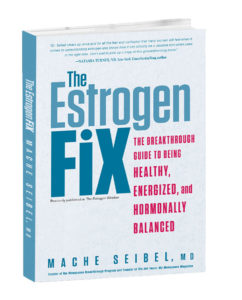Monday, January 15, 2018
Have you ever wondered how many eggs your ovaries contain ie your ovarian reserve? Or how long they might last?
It’s a fascinating question whose answer began when you were developing inside your mother’s womb.
According to an article in the June 2017 issue of The American Journal of Obstetrics and Gynecology, a woman is born with about 2 million primordial follicles. These are immature egg cells and represent the “pool” of eggs a woman has in her two ovaries.
Each month after puberty, about 25 – 30 of these primordial follicles start to mature and become antral follicles. They are called antral follicles because the egg begins to develop fluid around it called the antrum. Think of it like the yolk of a chicken egg starts to develop an “egg white” around it.

Natural attrition takes a toll on primordial follicles; by the time a woman has her first period that pool of eggs is down to around 400,000.
By the time she reaches her late 30s, the number of follicles has dropped to around 25,000. And just about the same time, the chances for a miscarriage increase.
For women who want to delay having children, or for those who want to extend having children, the question is often raised, “can I still have a baby.” Another way of saying that is “how many eggs are left.” The medical term for that is “ovarian reserve.”
Ovarian reserve is an important concept because it helps you and your doctors know the chances of having a healthy baby at a later time in your reproductive years.
It all depends on a complex combination of your age, genetics and any environmental toxins you might have been exposed to. So the best way to know your ovarian reserve is to test for it.
How do you test for ovarian reserve? 
There are several tests that answer that question.
FSH is a hormone measured in blood and it was the first of the tests used to measure ovarian reserve. FSH stands for follicle stimulating hormone. It’s also a test that lets a person know if she is approaching menopause. Basically, as the ovary contains fewer eggs, FSH levels rise. It’s an indirect test and it is a rough estimate. Levels of 10 to 20 IU/ml measured on day 2 – 5 of a menstrual cycle suggest the ovaries are becoming less sensitive and suggest a decreased ovarian reserve.
Antimullerian Homone (AMH) levels are another blood test for ovarian reserve. AMH is made exclusively by small antral follicles. Levels of AMH start to rise in adolescence as more eggs begin to develop and peak at around age 25. By the time of menopause, the blood levels of AMH are undetectable.
Levels of 0.1 – 1.66 ng/ml suggest a lower level of ovarian reserve. Higher AMH levels suggest more ovarian reserve and lower levels than 0.1 ng/ml suggest even lower ovarian reserve. A 25 year old woman might be expected to have an AMH level of 3.0 ng/ml, a 30 year old might be expected to have a level of 2.5 ng/ml, and a 35 year old a level of 1.5 ng/ml. You can see how age plays a role. Smoking, low vitamin D levels and obesity lower AMH levels.
Antral follicle count (AFC) is the third measure of how many eggs in your basket. This is a test that is what it sounds like, getting a pelvic ultrasound on day 2 to 4 of your cycle and counting how many antral follicles are present. The diameter of the fluid that surrounds each egg is measured and for this test is 2-10 mm.
Find less than 3 to 4 antral follicles with a diameter of 2-10mm is an indicator of low ovarian reserve.
How do these tests help you?
First of all, they are only rough estimates. You can’t tell with one of these tests if you can still get pregnant or what day you will go into menopause. They aren’t that specific.
They can tell you that if your test suggests low ovarian reserve and you want to have a baby, start now. You may or may not be successful, but waiting is not an option.
And if you’re wondering if menopause is getting closer, you can find that out. However, not any more specifically than within the next few years. It’s just not more specific that than. But it will give you an idea of how many eggs are still in your basket.
In the next post, I’ll explain how knowing how many eggs in your basket can help you make decisions about fertility and early menopause. Stay tuned…

For information on midlife hormones and how to take them, if they’re right for you or what alternatives work, check out my best selling book The Estrogen Fix at
EstrogenFixBook.com.
The post
How Many Eggs In Your Basket? appeared first on
Mache Seibel, M.D..
Get a free subscription to this award-winning digital magazine by visiting www.HotYearsMag.com. Issues contain videos, music, quotes and recipes and of course, lots of valuable, easy to understand articles on how to live a healthy, happy and hormonally balanced life.
For more information or to schedule an interview, contact Dr. Mache Seibel at info@mymenopausemagazine.com or 617-916-1880.